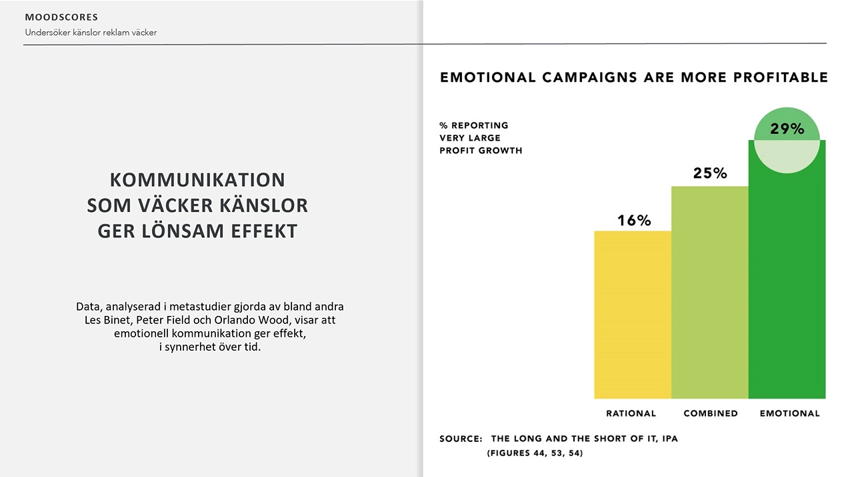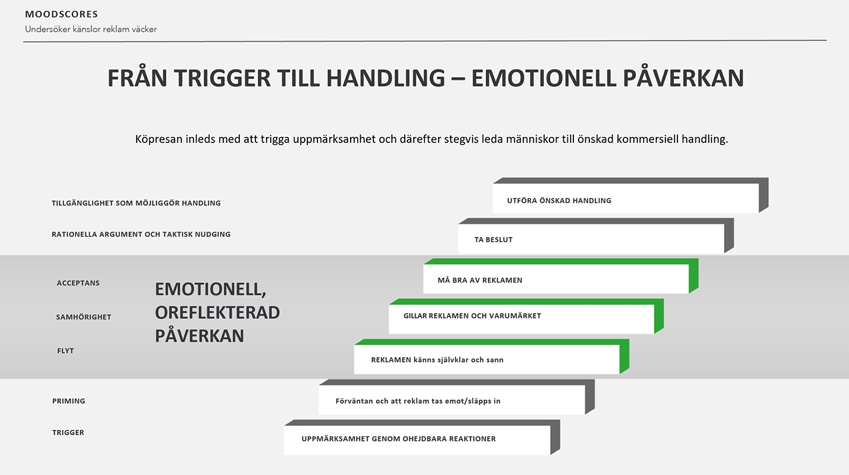Lessons about emotional communication in marketing & advertising
- Marie-Louise Cleeren
- Mar 9, 2023
- 3 min read
Article first published on LinkedIn on March 8, 2023
Yesterday I attended an interesting and insightful webinar by SWEDMA (the Swedish Data & Marketing Association) and guest speakers from Moodscores. Fredrik Wallner and Claes Tell presented research and insights on how you can evoke feelings through consumer advertising that result in profitable sales and a stronger brand. Moodscores is a Swedish research & analytics firm that measures the emotional impact of advertising and communication.
The reason I’m sharing this is that I think the concept is applicable also to B2B marketing, as all communication is targeted at humans. In strategic workshops with B2B clients in tech, I often talk about the importance of not only using rational arguments to build their brand and trigger customer buying behavior, but also address emotional aspects.
Engineering-heavy organizations are often more comfortable with identifying and using rational, logical and analytical facts to try and convince the target audience and, as a result, often end up in what I call the ”tech trenches” with their communication, i.e. focusing on technical facts and proof-points instead of explaining the real value of a solution or what problems it solves for their customers.
To build a strong and successful brand you need to address both emotional and rational aspects of your brand promise and desired market perception in the external communication – the question is in what part of the customer buying process to do what to achieve best effect? The below images from the webinar give some interesting guidance.
Source: Presentation by Moodscores during SWEDMA webinar on March 8, 2023.
Some of my take-aways from the webinar:
Advertising fatigue is an industry problem
Creative advertising (ability to stand out from the crowd with something unique) yields 4x higher Return on Marketing Investment (ROMI) than ads/commercials with low creative quality (Note: creativity is only good if it’s ”creative in the right way” and appeals to the intended audience so don’t go crazy just for creativity’s sake)
Emotions lay the foundation for the decisions we make – emotions affect the buyers’ journey, nudging them from initial trigger (of interest) to action
People’s emotions are triggered by a specific communication solution
The ability of your piece of communication to express and evoke passion and positive feelings for your brand among your audience will increase buyer interest, focus & attention
Research shows that there are three main factors that determine how effective communication is:
Flow / ”Cognitive Ease”: the ad content gives a feeling of something familiar, obvious and true, it’s easy to understand, non-contradictory and perhaps has a funny twist; it gets the audience to open up to a message.
Affinity: creates sense of belonging, fellowship; the audience recognizes and sympathizes with the brand & content (e.g. a situation, character, environment, attractive people or authoritative figures), which creates liking – they want to say yes.
Acceptance: humans are unconsciously attracted to and automatically accept messages and imagery that evoke a positive emotional state in us such as the feeling of happiness, comfort, pride, passion, freedom, belonging and status.
Moodscores have developed a standard questionnaire that enables them to help clients identify and measure the strength of different sentiments generated by a certain piece of communication (commercial / ad campaign), Based on these sentiments, they allocate a value for each of the three factors above, and then calculate an aggregated Moodscore for the ad or commercial that indicates its emotional strength and predicts its effectiveness among the target audience.
Moodscores enables clients to do A/B testing, compare which commercial concept or ad alternative is the strongest emotionally, identify evoked feelings that match the company’s strategic brand values, and investigate possible cultural differences of how the ads/commercials are perceived in different local markets.
Research shows that customers typically make the purchase-decision based on emotions and then justify their buy with rational/logical arguments. To convince them we must first deliver a strong emotional communication, then provide the rational arguments to back up their decision. This is a more complex process in B2B than in B2C. But in conclusion, emotional vs rational arguments are typically used in different parts of the buyers’ journey.
If you’re interested in learning more about Moodscores, check out https://moodscores.com/ (Swedish only) or their introduction in English here.












تعليقات